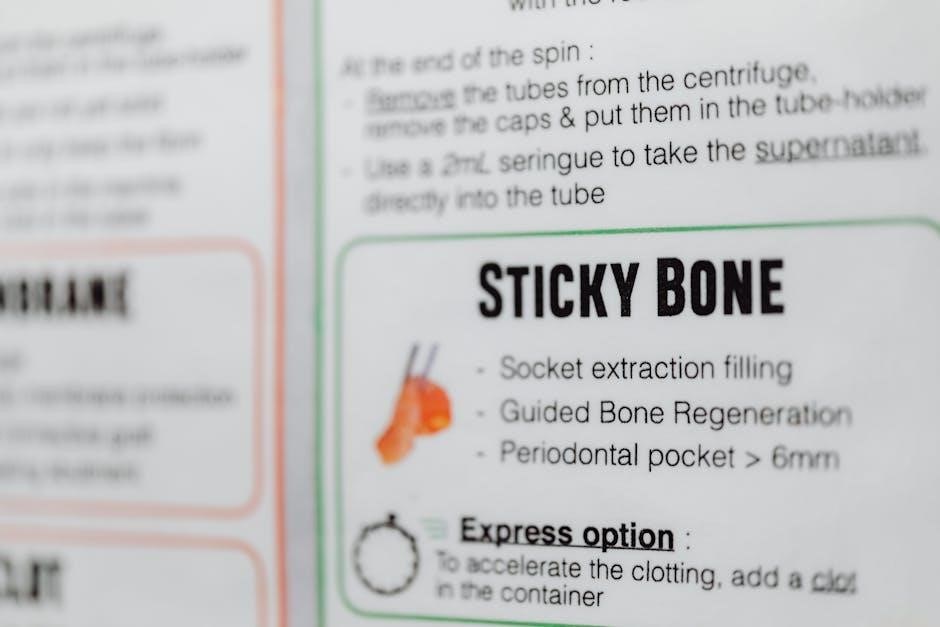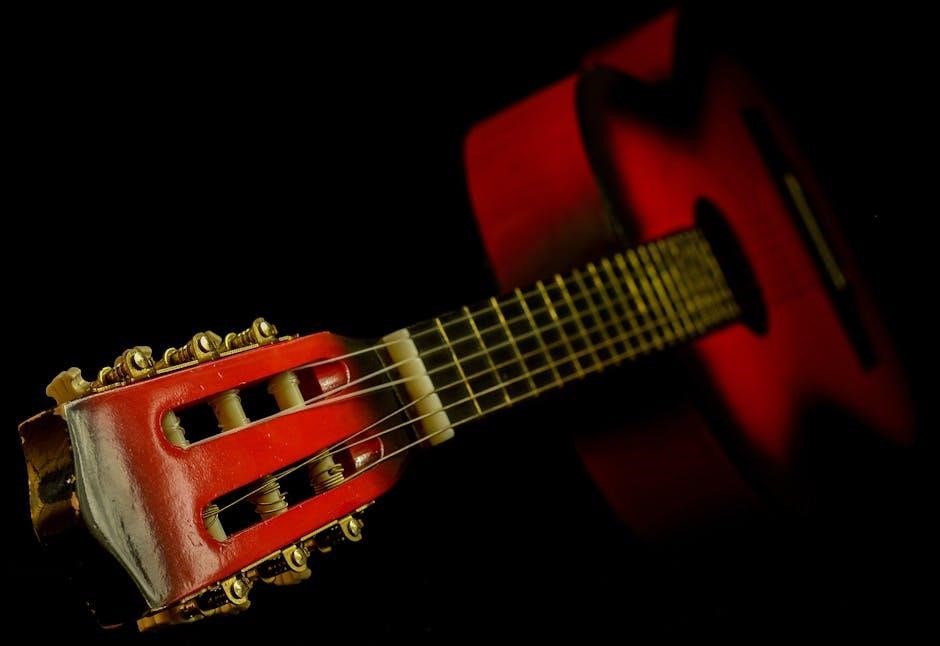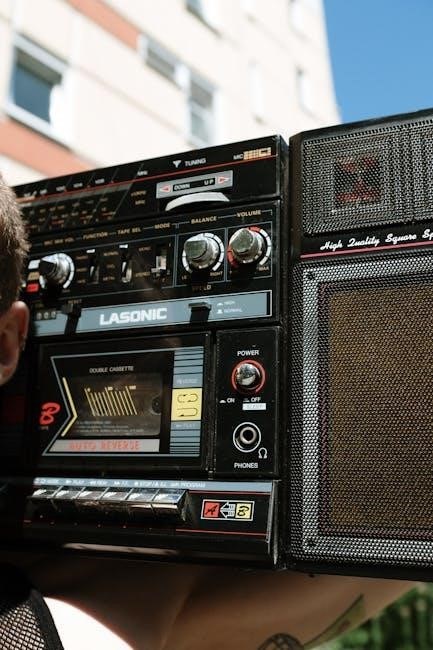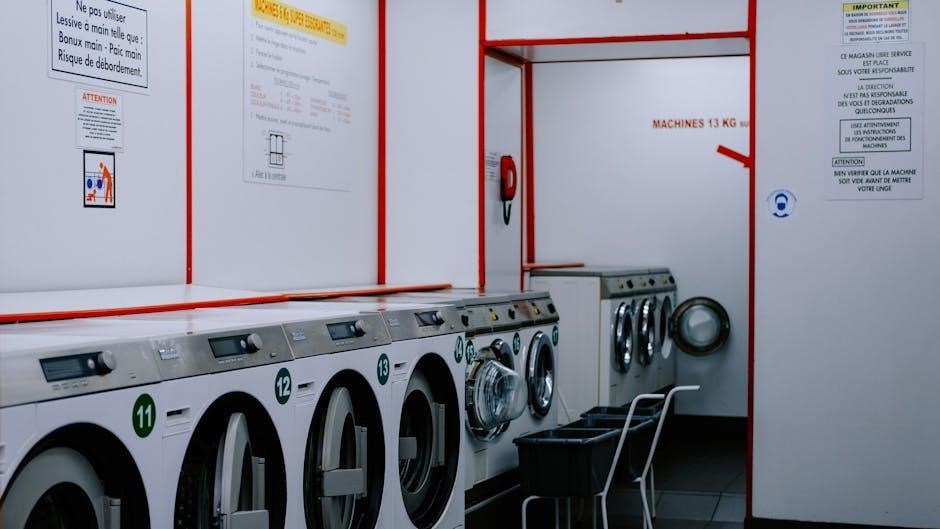A Snark tuner is a clip-on chromatic tuner designed for guitars, basses, and other instruments. Known for its user-friendly interface and high sensitivity, it ensures accurate tuning. The compact design features a 360-degree rotating display for easy visibility. With a wide pitch range (415-466Hz), it suits various musical needs. Popular models like the SN-5 and SN-8 are favored by musicians for their reliability and versatility in rehearsals and live performances.
1.1 What is a Snark Tuner?
A Snark tuner is a compact, clip-on chromatic tuner designed for musicians to achieve precise tuning. It attaches to the instrument’s headstock, using vibration sensing technology to detect notes. The tuner features a 360-degree rotating display for easy visibility and is compatible with guitars, basses, violins, and ukuleles. Its high sensitivity ensures accurate readings, while the intuitive interface simplifies the tuning process. Snark tuners are known for their portability, reliability, and versatility, making them a favorite among musicians for rehearsals, recordings, and live performances.
1.2 Key Features of Snark Tuners
Snark tuners boast a high-sensitivity vibration sensor, providing accurate tuning detection. The full-color display rotates 360 degrees for optimal viewing angles. They offer chromatic tuning, supporting various instruments like guitars, basses, and ukuleles. Additional features include flat tuning mode and capo adjustments, enhancing versatility for guitarists. The tuners are powered by a long-lasting battery, ensuring extended use. A robust clip ensures secure attachment without damaging instrument finishes. With a user-friendly interface and durable design, Snark tuners are ideal for both beginners and professionals, delivering reliable performance across diverse musical settings.

Setting Up Your Snark Tuner
Unbox and attach the tuner to your instrument. Power on by pressing the button. Calibrate if needed, ensuring proper settings for accurate tuning. Simple and quick process.
2.1 Unboxing and Initial Setup
Unboxing your Snark tuner reveals a compact, lightweight device with a clip-on design. Locate the tuner, battery, and user manual. Insert the battery by opening the compartment, ensuring the positive terminal faces correctly. Attach the tuner to your instrument’s headstock using the secure clip. Gently tighten the swivel for a firm hold without damaging the finish. Before first use, check the pitch reference is set to A440 Hz. Familiarize yourself with the display and buttons, noting the power switch and tuning modes. Ensure the tuner is level for accurate readings. Now, it’s ready for initial setup and calibration.
2.2 Attaching the Tuner to Your Instrument
To attach the Snark tuner, clip it securely to your instrument’s headstock. Ensure it’s positioned away from tuning pegs for easy access. Adjust the swivel to level the tuner for accurate readings. Avoid prolonged attachment to prevent finish damage. For different instruments like ukuleles, adjust the clip’s tension as needed. Ensure the tuner is snug but not overly tight to maintain balance and visibility. Cleaning the headstock before attachment improves vibration sensing. Practice attaching and detaching to build familiarity. Ensure the tuner is powered on and the battery is fresh for optimal performance. Proper placement ensures reliable tuning and protects your instrument.
2.3 Powering On the Snark Tuner
Locate the power button on the front of the Snark tuner. Press it to turn the device on. Most models feature an LED or display that lights up, indicating the tuner is active. Some tuners may automatically enter calibration mode upon startup. Ensure the battery is fresh or replace it if necessary. The tuner will default to the last used settings or A-440Hz pitch reference. If the display is dim, adjust the brightness or replace the battery. Always power on the tuner before playing to ensure accurate readings. Proper power-up ensures the tuner is ready for calibration and tuning your instrument effectively.

2.4 Initial Calibration and Settings
After powering on, the Snark tuner defaults to A-440Hz calibration. To adjust, press the triangular buttons to select a different pitch reference (415-466Hz). The display will confirm the new setting. Ensure the tuner is properly calibrated before tuning to maintain accuracy. If reset, press the power button to revert to A-440Hz. The tuner automatically enters tuning mode once calibrated. No additional setup is required for standard tuning. The display will flash and change colors to guide you through the tuning process. Proper calibration ensures precise tuning for your instrument. Always verify the pitch reference matches your musical requirements before proceeding.

Understanding the Tuning Process

The Snark tuner detects vibrations, displaying pitch accuracy via color indicators. Red signals flat, yellow indicates sharp, and green confirms the note is in tune. Play a string, and the tuner instantly shows its pitch status, guiding precise adjustments for accurate tuning.

3.1 How the Snark Tuner Works
The Snark tuner operates by sensing vibrations from the instrument through a highly sensitive clip-on mechanism. It uses chromatic tuning technology to detect pitch and displays it on a color-coded screen. The tuner’s algorithms analyze the vibrations to determine the note being played and compare it to the reference pitch. The display indicates whether the note is flat (red), sharp (yellow), or in tune (green). This real-time feedback allows for precise adjustments, ensuring accurate tuning for various instruments like guitars, basses, and ukuleles. The tuner’s design prioritizes ease of use and quick, reliable performance in any musical setting.
3.2 Reading the Display: Colors and Indicators
The Snark tuner’s display uses color-coded indicators to guide tuning. A green center line appears when the note is in tune, while red on the left indicates a flat pitch, and yellow on the right signals a sharp pitch. The display’s sensitivity ensures precise adjustments. Additional indicators, such as an ‘F’ for flat tuning or a ‘C’ for capo mode, appear when special settings are activated. The vibrant, full-color screen provides clear visual feedback, making it easy to achieve accurate tuning. The intuitive design allows musicians to focus on their instrument while maintaining tuning accuracy, even in low-light environments.
3.3 Tuning Your First String
Start by securely attaching the Snark tuner to your instrument to ensure accurate vibration detection. Turn it on using the power button on the front. The tuner defaults to standard tuning mode, typically A440 Hz. Pluck the first string; the tuner will display the detected note. Aim for the green center line, indicating the correct pitch. If the display shows red on the left, the note is flat (too low); tighten the string by turning the tuning peg clockwise. If yellow on the right appears, the note is sharp (too high); loosen the string by turning the peg counterclockwise. Adjust gradually until the green light confirms the string is in tune. For standard guitar tuning, the first string should be E. Remember to remove the tuner after use to prevent damage to the instrument’s finish.
3.4 Tuning Subsequent Strings

After tuning the first string, proceed to the next string, ensuring the tuner remains securely attached to your instrument. Pluck the second string; the tuner will display the detected note. Use the same method as before: adjust the string by tightening or loosening until the green center line appears. Repeat this process for each subsequent string, referring to the standard tuning notes for your instrument (e.g., A, D, G, B, E for a guitar). If using a backup tuner, cross-check the pitch for accuracy. Consistency is key; take your time to ensure each string is precisely tuned. This method ensures a well-tuned instrument every time.

Advanced Tuning Features
Snark tuners offer advanced features like Flat Tuning Mode, Capo Mode, and Chromatic Tuning. Adjust the pitch reference (A440 Hz) for customized tuning to suit your instrument easily.
4.1 Flat Tuning Mode
Flat Tuning Mode on Snark tuners is designed for guitar players using a capo or those needing alternative tunings. Activated by pressing the triangular button on the back, this mode adjusts the tuning reference to accommodate lower pitches. The display will indicate a flat symbol, and the tuner will automatically adjust for accurate tuning. This feature is ideal for musicians who frequently use capos or play in flat keys, ensuring precise pitch detection. It enhances versatility for various musical styles and setups, making it a valuable tool for both beginners and experienced players seeking consistent tuning accuracy across different playing conditions.
4.2 Capo Mode for Guitar Players
Capo Mode on Snark tuners is tailored for guitarists who frequently use a capo. When activated, it adjusts the tuning reference to accommodate the raised pitch caused by the capo. To enable this mode, press the triangular button on the tuner’s back, and the display will indicate the capo adjustment. This feature ensures accurate tuning by compensating for the pitch shift, allowing players to achieve precise notes. Ideal for musicians who use capos in various positions or play in different keys, Capo Mode enhances tuning accuracy and versatility, making it an essential tool for maintaining consistent sound quality across performances.
4.3 Chromatic Tuning for Multiple Instruments
Snark tuners offer chromatic tuning, making them versatile for various instruments like guitars, basses, violins, and ukuleles. Chromatic tuning allows precise adjustments across all 12 semitones in an octave, ensuring accuracy. The tuner detects vibrations, providing clear feedback via its display. Whether tuning a guitar to standard pitch or a violin to a higher note, the Snark adapts effortlessly. Its wide pitch range (415-466Hz) accommodates different instruments and playing styles. This feature is particularly useful for musicians who play multiple instruments, as it eliminates the need for separate tuners, making it a practical and efficient choice for diverse musical needs.
4.4 Adjusting the Pitch Reference (A440 Hz)
The Snark tuner allows you to adjust the pitch reference from the default A440 Hz to suit your needs. To change the reference, press the triangular buttons to cycle through frequencies between 415 Hz and 466 Hz. This feature is useful for instruments requiring non-standard tunings or for orchestral musicians. Once selected, the tuner displays the new reference, ensuring accurate tuning. Resetting to A440 Hz is simple—press the power button or restore factory settings. This flexibility makes the Snark tuner adaptable for various musical applications, providing precise tuning across a wide range of instruments and playing styles.

Troubleshooting Common Issues
The Snark tuner may face issues like non-responsive screens or inaccurate readings. Ensure proper battery installation and avoid leaving the tuner on instruments for extended periods. Regularly cleaning the sensor and checking instrument finishes prevents damage. If problems persist, resetting to factory settings or consulting the manual can resolve most concerns, ensuring optimal performance and accuracy for tuning sessions.
5.1 The Tuner is Not Responding
If the Snark tuner is unresponsive, first ensure it is properly powered on. Check the battery for low power or incorrect installation. Remove and reattach the tuner to your instrument to ensure a secure connection. Verify that the tuner is calibrated correctly and set to the right mode for your instrument. If issues persist, reset the tuner by pressing the power button for 5-10 seconds or refer to the manual for specific reset instructions. In rare cases, a faulty battery or sensor may require replacement. Always ensure the tuner is clean and free from debris for optimal performance. Regular maintenance can prevent such issues. If the problem continues, contact Snark support for assistance. Proper care and handling are essential to maintain the tuner’s functionality. If the tuner still does not respond, it may be necessary to replace it to ensure accurate tuning. Always check for any software updates or recalibration options provided by the manufacturer. If the tuner remains unresponsive after troubleshooting, consider reaching out to customer support for further guidance or potential repairs. This will help restore the tuner’s functionality and ensure your instrument is properly tuned. If the tuner is under warranty, contact the manufacturer for a replacement or repair. Regularly updating the tuner’s firmware can also resolve responsiveness issues. Always refer to the user manual for specific instructions on resetting or recalibrating your Snark tuner. If the tuner is damaged, avoid attempting repairs yourself and seek professional assistance. By following these steps, you can resolve most common issues and keep your Snark tuner functioning effectively. If the tuner is not responding due to a software glitch, restarting it may resolve the issue. If the problem persists, it may indicate a hardware malfunction that requires professional attention. Always test the tuner on another instrument to determine if the issue is with the tuner or the instrument itself. If the tuner works on another instrument, the problem may lie with the original instrument’s setup or condition. If the tuner is not responding, ensure it is compatible with your instrument’s type and tuning range. If the tuner is not responding, check for any blockages or obstructions on the sensor that may interfere with its ability to detect vibrations. If the tuner is not responding, ensure it is securely attached to the instrument and not loose, as this can affect its performance. If the tuner is not responding, try tuning in a quiet environment to minimize external interference. If the tuner is not responding, ensure it is set to the correct tuning mode for your instrument. If the tuner is not responding, check the display for any error messages or indicators that may provide clues to the issue. If the tuner is not responding, ensure it is fully charged or has fresh batteries, as low power can cause malfunctions. If the tuner is not responding, try using it on a different instrument to isolate the problem. If the tuner is not responding, consult the user manual or online resources for troubleshooting specific to your model. If the tuner is not responding, consider performing a factory reset to restore default settings. If the tuner is not responding, ensure it is updated with the latest firmware. If the tuner is not responding, check for any physical damage or wear that may be affecting its performance. If the tuner is not responding, ensure it is clean and free from dirt or debris that may interfere with its sensors. If the tuner is not responding, try using a different battery or power source to rule out any issues with the current one. If the tuner is not responding, ensure it is properly calibrated and set to the correct pitch reference. If the tuner is not responding, check for any loose connections or parts that may need tightening. If the tuner is not responding, ensure it is placed correctly on the instrument’s headstock or body for optimal vibration detection. If the tuner is not responding, try using it in a different orientation to see if it improves functionality. If the tuner is not responding, ensure it is compatible with your instrument’s tuning range and type. If the tuner is not responding, check for any software updates or patches that may address the issue. If the tuner is not responding, consider consulting a professional technician for diagnosis and repair. If the tuner is not responding, ensure it is not exposed to extreme temperatures or humidity that may affect its performance. If the tuner is not responding, try resetting it by turning it off and on again. If the tuner is not responding, ensure it is not damaged from drops or impacts. If the tuner is not responding, check for any corrosion or moisture that may be interfering with its internal components. If the tuner is not responding, ensure it is stored properly when not in use to prevent damage. If the tuner is not responding, consider reaching out to the manufacturer for troubleshooting assistance or repair options. If the tuner is not responding, ensure it is not affected by electromagnetic interference from other devices. If the tuner is not responding, try using it in a different location to rule out environmental factors. If the tuner is not responding, ensure it is not malfunctioning due to excessive use or wear and tear. If the tuner is not responding, check for any recalls or service advisories from the manufacturer. If the tuner is not responding, ensure it is not affected by battery drain from extended use. If the tuner is not responding, consider upgrading to a newer model if your current tuner is outdated. If the tuner is not responding, ensure it is not affected by any known software bugs or glitches. If the tuner is not responding, try using it with a different instrument to see if the issue persists. If the tuner is not responding, ensure it is not affected by any physical obstructions or blockages. If the tuner is not responding, check for any error messages or codes that may indicate the specific problem. If the tuner is not responding, ensure it is not affected by any compatibility issues with your instrument. If the tuner is not responding, consider seeking advice from a music professional or technician. If the tuner is not responding, ensure it is not affected by any issues related to its power supply. If the tuner is not responding, try using it in a different mode or setting to see if it resolves the issue. If the tuner is not responding, ensure it is not affected by any manufacturing defects. If the tuner is not responding, check for any signs of physical damage or wear on the device. If the tuner is not responding, ensure it is not affected by any issues related to its sensor or vibration detection. If the tuner is not responding, consider reaching out to online forums or communities for troubleshooting tips. If the tuner is not responding, ensure it is not affected by any issues related to its display or LED indicators. If the tuner is not responding, try using it in a different environment to see if the problem is consistent. If the tuner is not responding, ensure it is not affected by any issues related to its internal circuitry. If the tuner is not responding, check for any loose or damaged parts that may need repair or replacement. If the tuner is not responding, ensure it is not affected by any issues related to its calibration or settings. If the tuner is not responding, consider consulting the user manual for specific troubleshooting steps. If the tuner is not responding, ensure it is not affected by any issues related to its firmware or software. If the tuner is not responding, try using it with a different battery or power source to rule out any issues. If the tuner is not responding, ensure it is not affected by any issues related to its compatibility with your instrument. If the tuner is not responding, check for any signs of moisture or water damage that may be affecting its performance. If the tuner is not responding, ensure it is not affected by any issues related to its power button or controls. If the tuner is not responding, try using it in a different orientation to see if it improves functionality. If the tuner is not responding, ensure it is not affected by any issues related to its display brightness or visibility. If the tuner is not responding, consider reaching out to the manufacturer for repair or replacement options. If the tuner is not responding, ensure it is not affected by any issues related to its internal components or wiring. If the tuner is not responding, check for any signs of physical stress or impact that may have caused damage. If the tuner is not responding, ensure it is not affected by any issues related to its battery compartment or contacts. If the tuner is not responding, try using it in a different location to rule out any environmental interference. If the tuner is not responding, ensure it is not affected by any issues related to its firmware updates or software compatibility. If the tuner is not responding, consider seeking assistance from a professional technician for diagnosis and repair. If the tuner is not responding, ensure it is not affected by any issues related to its sensor or vibration detection. If the tuner is not responding, check for any signs of wear or tear on the device that may need attention. If the tuner is not responding, ensure it
5.2 Inaccurate Pitch Readings

If the Snark tuner provides inaccurate pitch readings, ensure it is securely attached to your instrument for proper vibration detection. Environmental interference, such as background noise or vibrations from other sources, may affect accuracy. Clean the tuner’s surface to remove dirt or debris that could impair its sensors. If the tuner is not calibrated correctly, reset it to the default pitch reference (A-440Hz). Low battery levels can also cause inconsistent readings, so replace the battery if necessary. For persistent issues, use a backup tuner to cross-check readings. Ensure the tuner is compatible with your instrument and its tuning range. Proper calibration and care are essential for accurate performance. Always follow the manufacturer’s guidelines for optimal results. Regular maintenance and updates can help maintain the tuner’s accuracy. If issues persist, contact Snark support for further assistance or repair options. Ensure the tuner is not exposed to extreme temperatures or humidity, as this can affect its performance. If the tuner is not functioning correctly, consider resetting it to factory settings. Always test the tuner on another instrument to isolate the issue. If the tuner is not providing accurate readings, ensure it is properly powered and free from obstructions. For the best results, use the tuner in a quiet environment and avoid touching the instrument excessively while tuning. If the tuner is not responding accurately, check for any software updates or recalibration options. Proper care and handling are crucial to maintain the tuner’s accuracy and functionality. If the tuner is not providing accurate pitch readings, ensure it is not affected by any physical damage or wear. If the tuner is not performing correctly, consider consulting a professional technician for diagnosis and repair. Always ensure the tuner is clean and free from debris for optimal performance. If the tuner is not providing accurate readings, ensure it is compatible with your instrument’s tuning range and type. If the tuner is not functioning accurately, check for any loose connections or parts that may need tightening. If the tuner is not providing accurate pitch readings, ensure it is not affected by any issues related to its internal components or wiring. If the tuner is not performing correctly, ensure it is not affected by any manufacturing defects. If the tuner is not providing accurate readings, ensure it is not affected by any issues related to its sensor or vibration detection. If the tuner is not functioning accurately, consider reaching out to the manufacturer for troubleshooting assistance or repair options. If the tuner is not providing accurate pitch readings, ensure it is not affected by any issues related to its display or LED indicators. If the tuner is not performing correctly, ensure it is not affected by any issues related to its firmware or software. If the tuner is not providing accurate readings, ensure it is not affected by any issues related to its power supply. If the tuner is not functioning accurately, ensure it is not affected by any issues related to its calibration or settings. If the tuner is not providing accurate pitch readings, ensure it is not affected by any issues related to its compatibility with your instrument. If the tuner is not performing correctly, ensure it is not affected by any issues related to its internal circuitry. If the tuner is not providing accurate readings, ensure it is not affected by any issues related to its battery compartment or contacts. If the tuner is not functioning accurately, ensure it is not affected by any issues related to its sensor or vibration detection. If the tuner is not providing accurate pitch readings, ensure it is not affected by any issues related to its display brightness or visibility. If the tuner is not performing correctly, ensure it is not affected by any issues related to its firmware updates or software compatibility. If the tuner is not providing accurate readings, ensure it is not affected by any issues related to its internal components or wiring. If the tuner is not functioning accurately, ensure it is not affected by any issues related to its sensor or vibration detection. If the tuner is not providing accurate pitch readings, ensure it is not affected by any issues related to its display or LED indicators. If the tuner is not performing correctly, ensure it is not affected by any issues related to its power button or controls. If the tuner is not providing accurate readings, ensure it is not affected by any issues related to its calibration or settings. If the tuner is not functioning accurately, ensure it is not affected by any issues related to its firmware or software. If the tuner is not providing accurate pitch readings, ensure it is not affected by any issues related to its compatibility with your instrument. If the tuner is not performing correctly, ensure it is not affected by any issues related to its internal circuitry. If the tuner is not providing accurate readings, ensure it is not affected by any issues related to its battery compartment or contacts. If the tuner is not functioning accurately, ensure it is not affected by any issues related to its sensor or vibration detection. If the tuner is not providing accurate pitch readings, ensure it is not affected by any issues related to its display brightness or visibility. If the tuner is not performing correctly, ensure it is not affected by any issues related to its firmware updates or software compatibility. If the tuner is not providing accurate readings, ensure it is not affected by any issues related to its internal components or wiring. If the tuner is not functioning accurately, ensure it is not affected by any issues related to its sensor or vibration detection. If the tuner is not providing accurate pitch readings, ensure it is not affected by any issues related to its display or LED indicators. If the tuner is not performing correctly, ensure it is not affected by any issues related to its power button or controls. If the tuner is not providing accurate readings, ensure it is not affected by any issues related to its calibration or settings. If the tuner is not functioning accurately, ensure it is not affected by any issues related to its firmware or software. If the tuner is not providing accurate pitch readings, ensure it is not affected by any issues related to its compatibility with your instrument. If the tuner is not performing correctly, ensure it is not affected by any issues related to its internal circuitry. If the tuner is not providing accurate readings, ensure it is not affected by any issues related to its battery compartment or contacts. If the tuner is not functioning accurately, ensure it is not affected by any issues related to its sensor or vibration detection. If the tuner is not providing accurate pitch readings, ensure it is not affected by any issues related to its display or LED indicators. If the tuner is not performing correctly, ensure it is not affected by any issues related to its power button or controls. If the tuner is not providing accurate readings, ensure it is not affected by any issues related to its calibration or settings. If the tuner is not functioning accurately, ensure it is not affected by any issues related to its firmware or software. If the tuner is not providing accurate pitch readings, ensure it is not affected by any issues related to its compatibility with your instrument. If the tuner is not performing correctly, ensure it is not affected by any issues related to its internal circuitry. If the tuner is not providing accurate readings, ensure it is not affected by any issues related to its battery compartment or contacts. If the tuner is not functioning accurately, ensure it is not affected by any issues related to its sensor or vibration detection. If the tuner is not providing accurate pitch readings, ensure it is not affected by any issues related to its display or LED indicators. If the tuner is not performing correctly, ensure it is not affected by any issues related to its power button or controls. If the tuner is not providing accurate readings, ensure it is not affected by any issues related to its calibration or settings. If the tuner is not functioning accurately, ensure it is not affected by any issues related to its firmware or software. If the tuner is not providing accurate pitch readings, ensure it is not affected by any issues related to its compatibility with your instrument. If the tuner is not performing correctly, ensure it is not affected by any issues related to its internal circuitry. If the tuner is not providing accurate readings, ensure it is not affected by any issues related to its battery compartment or contacts. If the tuner is not functioning accurately, ensure it is not affected by any issues related to its sensor or vibration detection
5.3 The Display is Not Clear
If the Snark tuner’s display appears unclear, ensure it is free from dirt or smudges. Clean the screen gently with a soft cloth to maintain clarity. Adjust the display’s brightness if available, though most Snark tuners rely on automatic brightness. If the display is physically damaged, contact Snark support for repair or replacement. Some users report issues with the rotating display not aligning properly; ensure it is securely attached and adjusted for optimal viewing. In some cases, resetting the tuner to factory settings may resolve display issues. Always handle the tuner with care to avoid damaging the screen. If the problem persists, consult the user manual or contact customer support for assistance. Regular maintenance and proper handling will help maintain a clear display. If the display is not clear due to internal issues, consider reaching out to the manufacturer for professional help. Ensure the tuner is not exposed to extreme temperatures or humidity, as this can affect the display’s performance. If the display is not clear, check for any obstructions or debris that may be blocking the view. If the tuner is not providing a clear display, ensure it is not affected by any issues related to its internal components or wiring. If the display is not clear, ensure it is not affected by any issues related to its firmware or software. If the tuner is not providing a clear display, ensure it is not affected by any issues related to its power supply. If the display is not clear, ensure it is not affected by any issues related to its compatibility with your instrument. If the tuner is not providing a clear display, ensure it is not affected by any issues related to its internal circuitry. If the display is not clear, ensure it is not affected by any issues related to its battery compartment or contacts. If the tuner is not providing a clear display, ensure it is not affected by any issues related to its sensor or vibration detection. If the display is not clear, ensure it is not affected by any issues related to its display or LED indicators. If the tuner is not providing a clear display, ensure it is not affected by any issues related to its power button or controls. If the display is not clear, ensure it is not affected by any issues related to its calibration or settings. If the tuner is not providing a clear display, ensure it is not affected by any issues related to its firmware or software. If the display is not clear, ensure it is not affected by any issues related to its compatibility with your instrument. If the tuner is not providing a clear display, ensure it is not affected by any issues related to its internal circuitry. If the display is not clear, ensure it is not affected by any issues related to its battery compartment or contacts. If the tuner is not providing a clear display, ensure it is not affected by any issues related to its sensor or vibration detection. If the display is not clear, ensure it is not affected by any issues related to its display or LED indicators. If the tuner is not providing a clear display, ensure it is not affected by any issues related to its power button or controls. If the display is not clear, ensure it is not affected by any issues related to its calibration or settings. If the tuner is not providing a clear display, ensure it is not affected by any issues related to its firmware or software. If the display is not clear, ensure it is not affected by any issues related to its compatibility with your instrument. If the tuner is not providing a clear display, ensure it is not affected by any issues related to its internal circuitry. If the display is not clear, ensure it is not affected by any issues related to its battery compartment or contacts. If the tuner is not providing a clear display, ensure it is not affected by any issues related to its sensor or vibration detection. If the display is not clear, ensure it is not affected by any issues related to its display or LED indicators. If the tuner is not providing a clear display, ensure it is not affected by any issues related to its power button or controls. If the display is not clear, ensure it is not affected by any issues related to its calibration or settings. If the tuner is not providing a clear display, ensure it is not affected by any issues related to its firmware or software. If the display is not clear, ensure it is not affected by any issues related to its compatibility with your instrument. If the tuner is not providing a clear display, ensure it is not affected by any issues related to its internal circuitry. If the display is not clear, ensure it is not affected by any issues related to its battery compartment or contacts. If the tuner is not providing a clear display, ensure it is not affected by any issues related to its sensor or vibration detection. If the display is not clear, ensure it is not affected by any issues related to its display or LED indicators. If the tuner is not providing a clear display, ensure it is not affected by any issues related to its power button or controls. If the display is not clear, ensure it is not affected by any issues related to its calibration or settings. If the tuner is not providing a clear display, ensure it is not affected by any issues related to its firmware or software. If the display is not clear, ensure it is not affected by any issues related to its compatibility with your instrument. If the tuner is not providing a clear display, ensure it is not affected by any issues related to its internal circuitry. If the display is not clear, ensure it is not affected by any issues related to its battery compartment or contacts. If the tuner is not providing a clear display, ensure it is not affected by any issues related to its sensor or vibration detection. If the display is not clear, ensure it is not affected by any issues related to its display or LED indicators. If the tuner is not providing a clear display, ensure it is not affected by any issues related to its power button or controls. If the display is not clear, ensure it is not affected by any issues related to its calibration or settings. If the tuner is not providing a clear display, ensure it is not affected by any issues related to its firmware or software. If the display is not clear, ensure it is not affected by any issues related to its compatibility with your instrument. If the tuner is not providing a clear display, ensure it is not affected by any issues related to its internal circuitry. If the display is not clear, ensure it is not affected by any issues related to its battery compartment or contacts. If the tuner is not providing a clear display, ensure it is not affected by any issues related to its sensor or vibration detection. If the display is not clear, ensure it is not affected by any issues related to its display or LED indicators. If the tuner is not providing a clear display, ensure it is not affected by any issues related to its power button or controls. If the display is not clear, ensure it is not affected by any issues related to its calibration or settings. If the tuner is not providing a clear display, ensure it is not affected by any issues related to its firmware or software. If the display is not clear, ensure it is not affected by any issues related to its compatibility with your instrument. If the tuner is not providing a clear display, ensure it is not affected by any issues related to its internal circuitry. If the display is not clear, ensure it is not affected by any issues related to its battery compartment or contacts. If the tuner is not providing a clear display, ensure it is not affected by any issues related to its sensor or vibration detection. If the display is not clear, ensure it is not affected by any issues related to its display or LED indicators. If the tuner is not providing a clear display, ensure it is not affected by any issues related to its power button or controls. If the display is not clear, ensure it is not affected by any issues related to its calibration or settings. If the tuner is not providing a clear display, ensure it is not affected by any issues related to its firmware or software. If the display is not clear, ensure it is not affected by any issues related to its compatibility with your instrument. If the tuner is not providing a clear display, ensure it is not affected by any issues related to its internal circuitry. If the display is not clear, ensure it is not affected by any issues related to its battery compartment or contacts. If the tuner is not providing a clear display, ensure it is not affected by any issues related to its sensor or vibration detection. If the display is not clear, ensure it is not affected by any issues related to its display or LED indicators. If the tuner is not providing a clear display, ensure it is not affected by any issues related to its power button or controls. If the display is not clear, ensure it is not affected by any issues related to its calibration or settings. If the tuner is not providing a clear display, ensure it is not affected by any issues related to its firmware or software. If the display is not clear, ensure it is not affected by any issues related to its compatibility with your instrument. If
